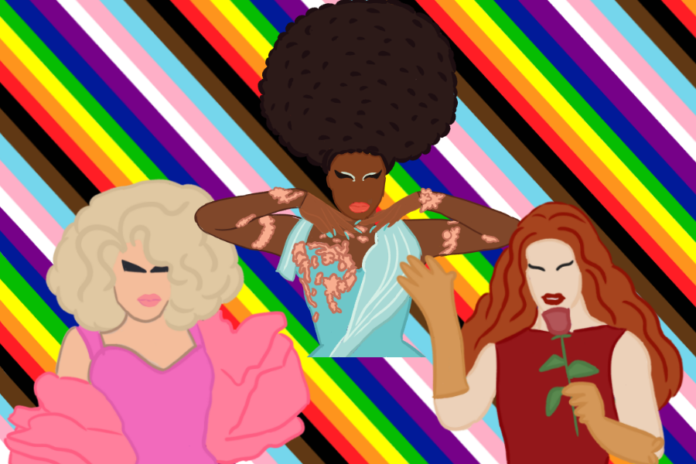Looking at the performance craft as more than a political tool
By CORALIE LOON — arts@theaggie.org
Earlier this month, Tennessee became the first state to pass a bill banning drag shows in public places, sparked by a fear of such shows “being harmful to minors.” Following the introduction of Tennessee Senate Bill 3, a slew of legislation restricting drag was introduced in other states across the country, including Idaho, Kansas, Missouri, Montana, Nebraska, Oklahoma, South Carolina, Texas and West Virginia. The politicization of this performance in many ways shadows the politicization of sexuality, gender expression and other parts of people’s personal lives.
The discussion of queer and trans rights is vital — human life, rights and autonomy are at stake. But the hyper-politicization of drag in the media often causes us to overlook what the art form is at its core and why it’s so important to protect and cherish.
Drag has often been and continues to be used as a political tool. By nature, it challenges the norm by breaking and reinventing gender roles. One of the most basic definitions of drag is “performing in an exaggerated way that caricatures or challenges male or female stereotypes,” subverting societal expectations about the relationship between sex, gender identity and gender expression.
Drag is a vehicle for making statements, speaking out and expressing discontent with the status quo. But it also doesn’t have to be political in the same way that women growing out their armpit or leg hair doesn’t have to be; it can just be a personal choice, a way to express oneself to increase self-acceptance and love.
It can also just be, well, fun. It’s time to celebrate drag for what it is: art.
Drag as art has been around for centuries. The term was coined during the era of Shakespeare when men would dress up to play women’s roles in the theater. The “first-ever” drag queen, William Dorsey Swann, was born enslaved in the 17th century, and after escaping enslavement, Swann hosted drag balls for Black men to celebrate and perform together. Drag has existed as an underground art style for most of its life, living on the fringes of society and providing a safe space for marginalized communities.
Drag resists politicization by blurring its own definitions. Far-right political movements attempt to legally confine drag through legislation, including the original Tennessee bill, which defined drag performers as “male or female impersonators.” But this definition misses the whole point of drag — to detach “male” and “female” categories from gendered social constructions, to not impersonate bodies as much as to impersonate the norms and idealizations attached to those bodies.
Drag is about breaking boundaries and definitions because that is what art is about. Some define drag as performance mixed with genderfuck, or the bending of one’s gender expression, identity or presentation. The presence of heterosexual, trans, cisgender and nonbinary drag performers prove drag’s inability to be defined as one thing.
Art that evades confinement is hard to limit through policy. CBS News talked about the politicization of drag and in doing so, addressed “common” questions people have about drag: Is drag sexual? Should children see or dress in drag? But these questions ignore drag for what it is: an art form and method of self-expression. Would you ask if a child should view or engage with art? Would you ask, “Is art sexual?”
These questions seem silly because we know that art evades definition and that all art is different. What defines it is not who it’s made for or what the final product is, but that something was created simply because someone felt compelled to create it.
People perform drag because it’s joyful. Drag can provide a sense of community when, according to Psychiatric Times, “29% of LGBTQ+ youth have experienced homelessness, been kicked out of their homes, or have run away.” Embodying a character outside of oneself has what is sometimes called a “Batman effect,” whereby individuals feel they can boost a sense of “perseverance during challenging situations, and increase [their] self-control.”
Performing drag does not come without its challenges: social ostracization, discrimination and the monetary cost of performing, just to name a few. But people still do it because drag offers them liberation and autonomy in a world where queer and gender-nonconforming people are prevented from fully realizing these feelings in day-to-day life.
And drag’s impacts go far beyond the performer — an article by the University of Northampton says that people who watched U.K. drag shows on TV described it as boosting their confidence and soothing feelings of anxiety and depression.
In their horror-drag competition show, the Boulet Brothers say it best: “Drag is art, and art is subjective.” Drag can be political, but it is also much deeper and more personal.
Drag is joy. Drag is catharsis. Drag is autonomy. Drag is necessary because when we threaten art, we threaten all that is human within us.
Most importantly, drag is a human right.
Written by: Coralie Loon — arts@theaggie.org




